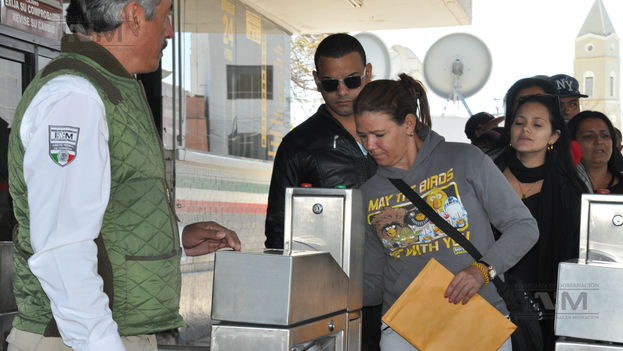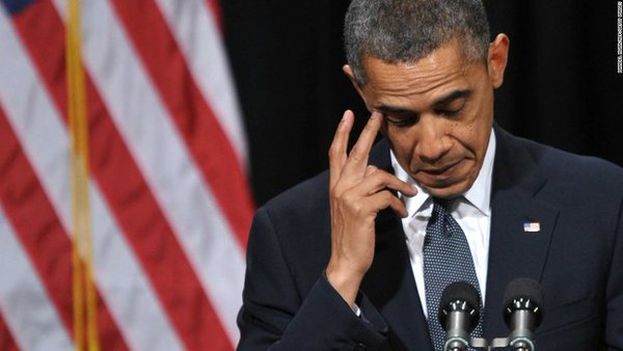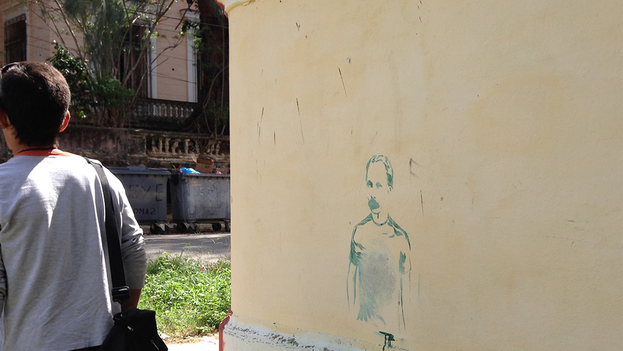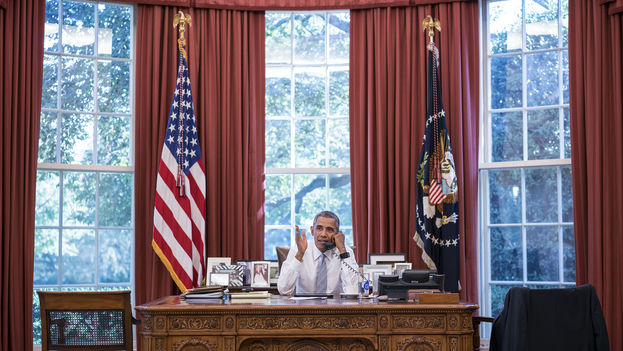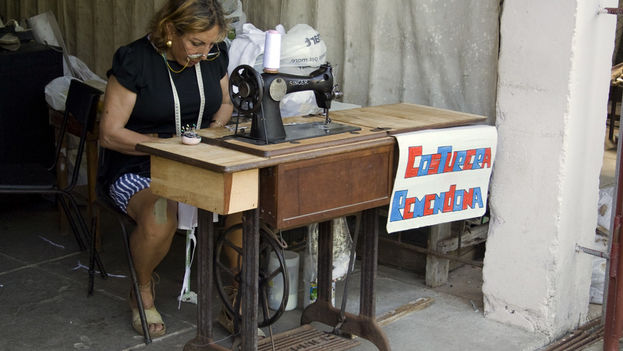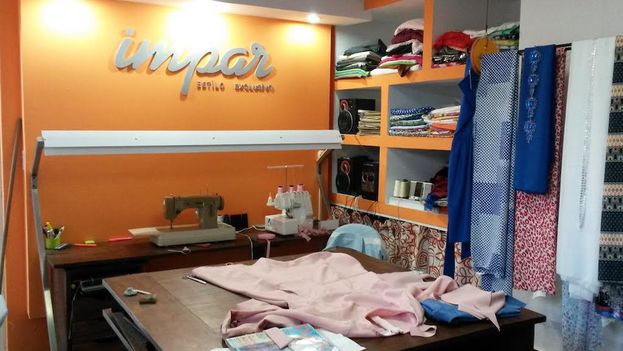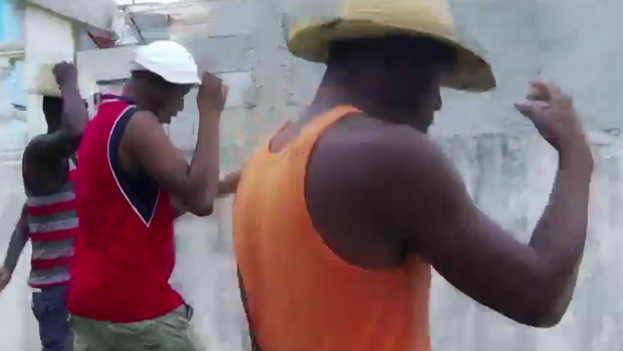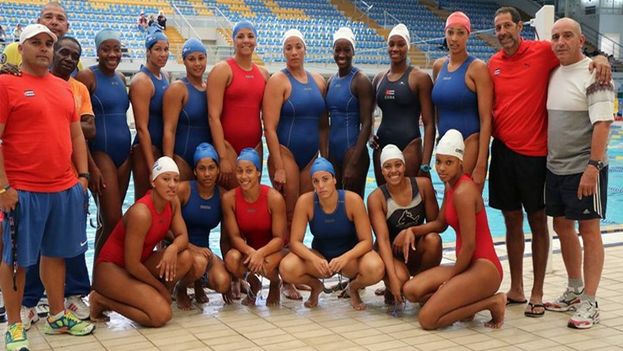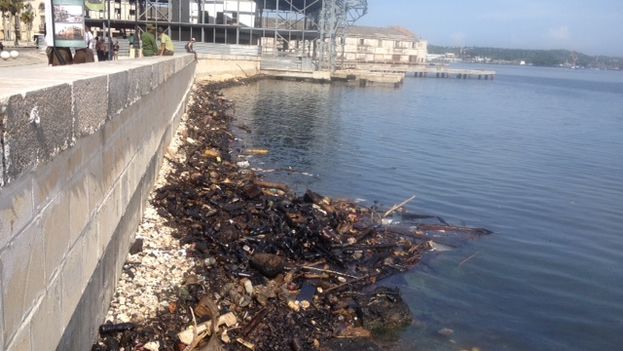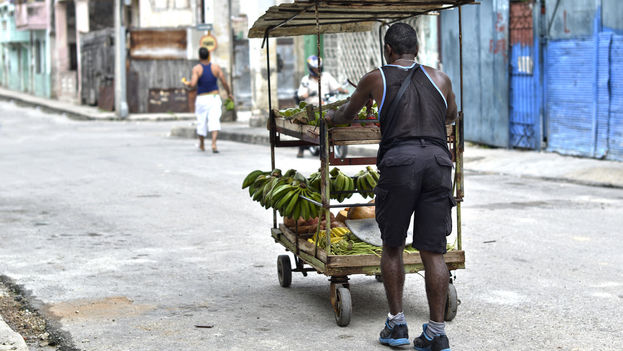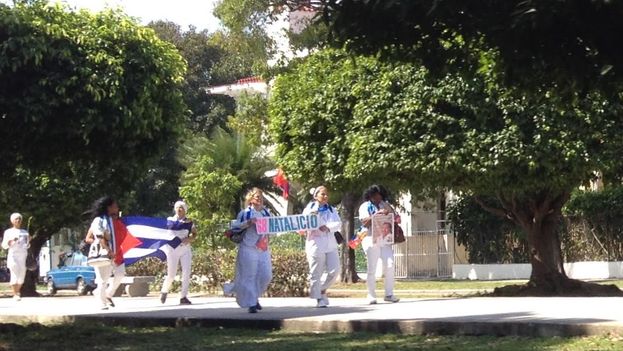However, under the mantra placed in the shadow of their modest Havana trade, those mistaken sellers believe they will be protected from the whims of a regime well versed in denying its own creations, either because they don’t properly subordinate themselves to the interests they were created for, or for considering them to be a potential threat to its supremacy. Is the same simulation game that propelled thousands of self-employed to join the apocryphal official union, which has turned a blind eye and a deaf ear to the abuse of their members by the most powerful boss on this island, the State-Party-Government, from which no one is safe.
While there are fewer operations of confiscation and persecution against the merchants in the squalid private sector, in particular the popular vendors engaging in street selling of agricultural products, an occasional cart starts to appear timidly, usually at dusk, when the inspectors and heads of sectors of the uniformed police have concluded their workday.
According to unconfirmed rumors from official sources, many of the pushcart vendors affected by the crackdown in late 2015 and early 2016 have been informally allowed to trade again, though “quietly and low-key.”
A survey conducted in several districts of the populous municipality of Central Havana is able to prove the effect of the bellows technique — stretch and loosen – that the authorities usually apply, where each raid is followed apparent tolerance, under the careful eyes of the guardians of system, in part to control both the boom of the emerging sector sellers who have proven to be highly competitive against the State sector, and partly to lessen the great popular discontent triggered by the sudden decrease in the flow of food available to feed families.
Some cell phone video images uploaded to the internet which were recorded by ordinary citizens, witnesses of the official crusade against pushcart vendors, have shown the public the true nature of the so-called “Raul reforms” the people’s disdain in the face of official abuse and of its repressive forces, and the spontaneous popular solidarity towards the sellers. New communications technologies, even in a country as disconnected from the web as is Cuba, make it increasingly difficult to peddle the old discourse of “good and fair government” and “happy Cubans.”
On the threshold of the Seventh Congress of the Communist Party of Cuba nothing is more inconvenient than to implement unpopular measures, particularly when the State is incapable of emulating, in terms of production and food trade, even the fragile self-employed sector. To hold such a conclave amid a starving population would be too cynical even for the Cuban government.
In Cuba, there is a diffuse band of tolerance between legality and crime, as the authorities see fit
For that reason, and without making much fuss, agents and government control officials have notified several pushcart vendors that they can once again sell their products, though they have not yet returned the licenses to the more obstinate ones from whom they were seized.
Yasser is one of them. Although he’s only 30, he has great work experience. He began working as a teenager, after quitting his studies at a technological institute due to poor economic conditions at home, where the only sources of income were his mother’s salary and his grandmother’s pension, a story that has become extremely common in Cuba.
“First I started as bicycle repairman, but I soon discovered that it was more profitable to buy and sell bicycles and spare parts than to be getting my hands dirty and breaking my back repairing old clunkers. That’s where I learned that my true calling was trade: the buying and selling and the constant and hard cash profits. I do my best work in trading,” he smiles, sure of what he is talking about.
When the bicycle business began to decline, he went to work with his uncle at a State agricultural cooperative, in the countryside. “I did not intend to work the land forever, but the agricultural trade interested me. After I stopped working in bikes, I had managed a vegetable stand for a while, through my uncle’s contacts, but it was risky and the profits were low, so I decided to learn more about the countryside and production management first hand. Meanwhile, I would develop a good network of contacts to use later, when I could have my own little business, which was my set idea.”
So that’s how it went. And Yasser, the young man from Havana did so well in that State cooperative he even got a license which legally certifies him as “delegate of the National Association of Small Farmers (ANAP),” a document that allows him to stock up on products sold in his pushcart as a self-employed person.
Now, with his peculiar charisma and his skills as a merchant, Yasser buys directly from a private producer and ships the products home using private transportation services. To avoid having the goods confiscated, he uses his card as “delegate of the ANAP” and an authorization from a bribed manager of a State co-op “that produces absolutely nothing” but that certifies that his products were bought from that co-op and are destined for a State Agricultural Market (MAE), or to some workplace, or any other place. With these papers of safe passage and his getup as producer, wearing a hat and high water galoshes up to his knees, embedded with mud from the furrows, Yasser has managed to survive in the dangerous world of private business.
General corruption in Cuba is, at the same time, the real support of the “economic model” and of the social balance, the trap that standardizes all Cubans as transgressors of the law
However, he knows perfectly well that he is teetering on a tightrope. In Cuba there is a diffuse band of tolerance between legality and crime, as suits the authorities. Simply put, if an administrator who signs his “passage” falls into disgrace, the chain of beneficiaries will also fall, including Yasser. General corruption in Cuba is, at the same time, the real support of the “economic model” and of the social balance, the trap that standardizes all Cubans as transgressors of the law. Anyone can end up in a dungeon.
“When this business with the pushcarts started, I thought it might be an opportunity for me. I really believed in the premise that, this time, we were really going to be respected as contributors, though my uncle kept telling me that the government was going to change gears and go in reverse, as always. I went as far as owning two carts, which my uncle and my cousin took care of, because I am the owner and the go-between at the same time, and I’m always going between the country and the city, getting the products. Now I only take this one out – he points to a simple chivichana [a rustic skateboard] loaded with the best tomatoes around town, at 12 Cuban pesos – and I am putting out the goods gradually. I do not want evil eyes on me, because, in the end, this business will also go bust, it will be one more deception. As my grandmother says, these people are a lost cause.”
It’s only been a few years since the false blessing of the self-employment industry workers, and the very Government has taken it upon itself to demonize, criminalize and prosecute them, belying its own discourse. “They do not even respect themselves, that’s why nobody believes them, nobody wants them and nobody respects them anymore.” says Yasser with what seems more like a pessimistic old man’s view than the words of a young 30-something. His disillusionment is, by far, the most authentic symbol of a society which has succumbed to the fatigue of almost 60 years of hypocrisy.
Translated by Norma Whiting
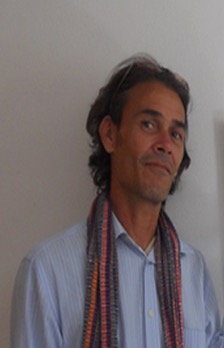

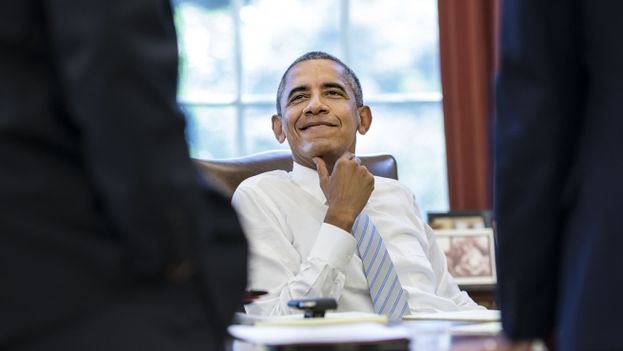
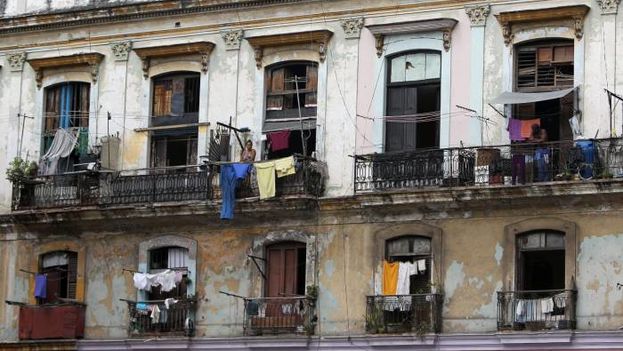
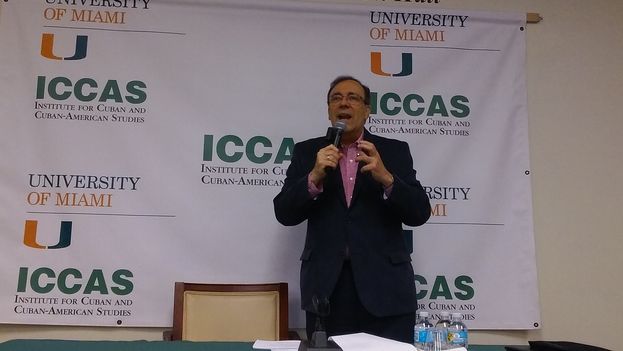
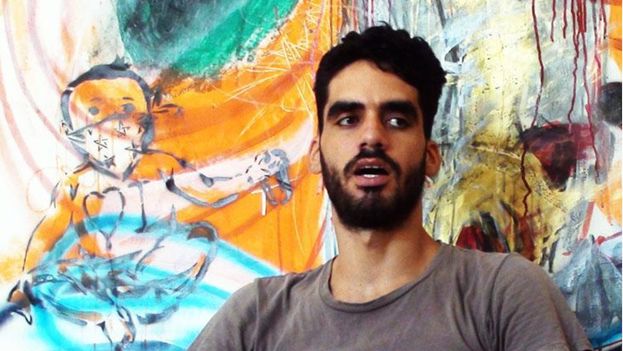
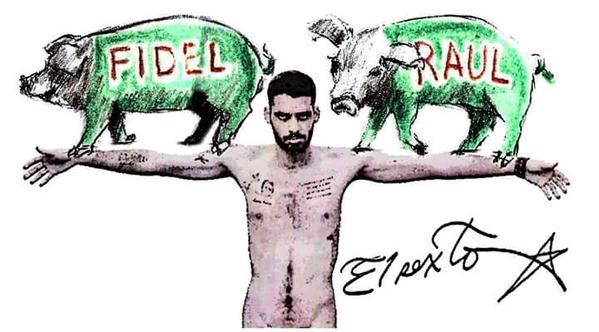 While behind bars he drew and wrote a kind of diary, when he was not in isolation, undertook a hunger strike, and was declared a prisoner of conscience by Amnesty International. He also won the 2015 Vaclav Havel International Prize for Creative Dissidence, awarded by the Human Rights Foundation.
While behind bars he drew and wrote a kind of diary, when he was not in isolation, undertook a hunger strike, and was declared a prisoner of conscience by Amnesty International. He also won the 2015 Vaclav Havel International Prize for Creative Dissidence, awarded by the Human Rights Foundation.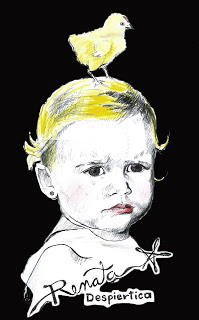 He has a daughter in Cuba, Renata Maria who is two-and-a-half, and he told EFE that everything he does “is to let her name rise higher.”
He has a daughter in Cuba, Renata Maria who is two-and-a-half, and he told EFE that everything he does “is to let her name rise higher.”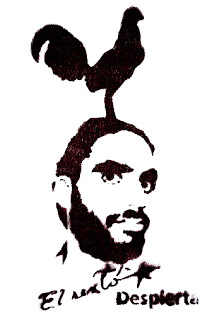 Cubans “waking up within” is, for El Sexto, the only way to change Cuba, apart from, clearly, “the [Castro] government stepping down,” a government that “has spent 50 years taking things from the people and exercising power by force.”
Cubans “waking up within” is, for El Sexto, the only way to change Cuba, apart from, clearly, “the [Castro] government stepping down,” a government that “has spent 50 years taking things from the people and exercising power by force.”